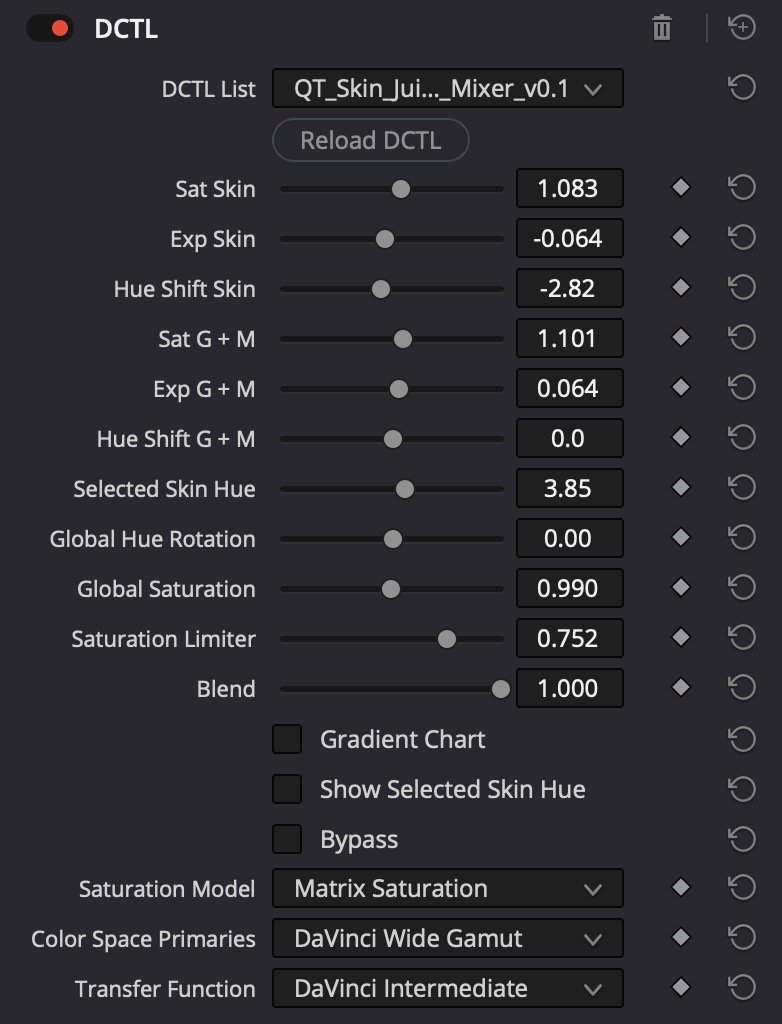QT Skin Juice Mixer
Get Film-Like, RICH skin tones while creating color separation.
-
Increase or decrease the saturation of the Skin and Blues axis.
-
Increase or decrease the exposure of the target skintone.
-
Specify how much you want to preferentially rotate the baseline skin hue axis.
-
Increase or decrease the saturation of the Green and Magenta axis.
-
Increase or decrease the exposure of the target green tone. Magenta's exposure will get the opposite effect.
-
Specify how much to rotate the Green and Magenta axis.
-
If the skin hues you want to preserve in your image differ from our target skin hue, then use this slider to choose a different base skin hue to be preserved by the matrix.
-
After the matrix is applied, this hue rotation is applied to all colors.
-
Increase or decrease the saturation of all colors.
-
Reduces the effect of the matrix when set below 1.0.
-
Draws the Skin v Blues axis and the Green v Magenta that is manipulated by the above controls. Observe how the sliders affect the brightness, saturation, and hue of the sliders to get an idea of what's going on.
-
Shows which parts of the input image are near your selected skin hue.
-
Disables the color adjustments, equivalent to setting the Blend to 0.0.
Recover impossibly green skin tones in seconds.
Saturation Model
Controls whether the Global Saturation adjustment is computed via a 3x3 matrix, or via the spherical color model.
Living up to its name and beyond.
Color Space Primaries and Transfer Function
Specify the color space of the image going into this DCTL. Returns an image in the same color space. This is important to get right because the tool works best in linear and the skin tones are computed with respect to this color space.






